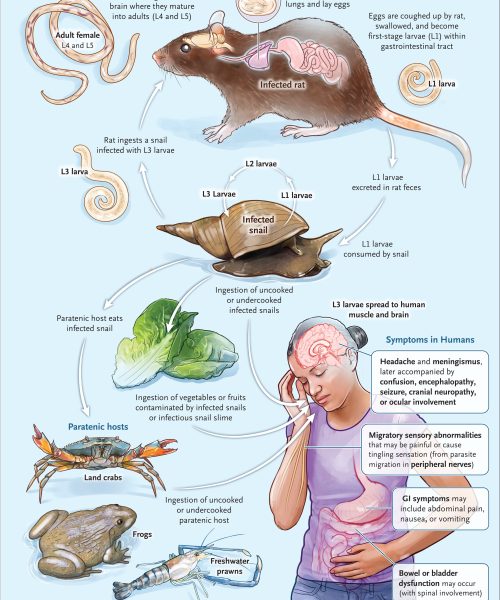While humans won’t be regenerating entire limbs like sea stars, some new genetic work with fruit flies has yielded some surprising results. A team from the University of Tokyo found that certain genes from simple organisms that help them regenerate body parts and tissues can be transferred into other animals. These genes then suppressed an intestinal issue in the flies and could potentially reveal some new mechanisms for rejuvenation in more complex organisms. The findings are detailed in a study published August 1 in the journal BMC Biology.
[Related: These fingernail-sized jellyfish can regenerate tentacles—but how?]
Some animals including jellyfish and flatworms can regenerate their whole bodies. While scientists still don’t really know how, there are possibly specific genes that allow regeneration. These same genes may also maintain long-term stem cell functions.
Stem cells can divide and renew themselves over a long period of time and are kind of like a skeleton key. While they aren’t necessarily specialized, they can potentially become more specialized cells, including blood cells and brain cells, over time. Mammals and insects who have very limited regenerative skills may have lost these genes over the course of evolution.
“It is unclear whether reintroducing these regeneration-associated genes in low regenerative animals could affect their regeneration and aging processes,” study co-author and University of Tokyo Graduate School of Pharmaceutical Sciences biologist Yuichiro Nakajima said in a statement.
In this new study, Nakajima and the team focused on the group of genes that is unique to animals with high regenerative capacity like flatworms. These genes are called HRJDs, or highly regenerative species-specific JmjC domain-encoding genes. They transferred the HRJDs into the fruit fly (Drosophila melanogaster) and tracked their health with a blue dye. They nicknamed the fly Smurf, thanks to this hue.

Initially, they hoped that these HRJD-boosted fruit flies would regenerate tissue if injured. This didn’t happen. However, the team had a fruit fly intestine expert Hiroki Nagai onboard, who noticed something else. There were some novel phenotypes–or the characteristics like eye color or hair color that comes from a specific gene.
“HRJDs promoted greater intestinal stem cell division, whilst also suppressing intestinal cells that were mis-differentiating, or going wrong in aged flies,” said Nakajima.
This is different to how antibiotics may suppress the mis-differentiated intestinal cells, but suppress intestinal stem cell division.
[Related: Hydras can regrow their heads. Scientists want to know how they do it.]
“For this reason, HRJDs had a measurable effect on the lifespans of fruit flies, which opens the door, or at least provides clues, for the development of new anti-aging strategies,” said Nakajima. “After all, human and insect intestines have surprisingly much in common on a cellular level.”
Fruit flies are famous test subjects in biological research. They share 75 percent of the genes that cause diseases in humans, reproduce quickly, and their genetic code is fairly easy to change. However, even with their relatively short lives and rapid-fire reproduction and maturating rates, it still took about two months to study their full aging process.

In future studies, the team would like to take a closer look at how HRJD’s work on a molecular level.
“Details of the molecular workings of HRJDs are still unresolved. And it’s unclear whether they work alone or in combination with some other component,” said Nakajima. “Therefore, this is just the start of the journey, but we know now that our modified fruit flies can serve as a valuable resource to uncover unprecedented mechanisms of stem cell rejuvenation in the future. In humans, intestinal stem cells decrease in activity with age, so this research is a promising avenue for stem cell-based therapies.”





